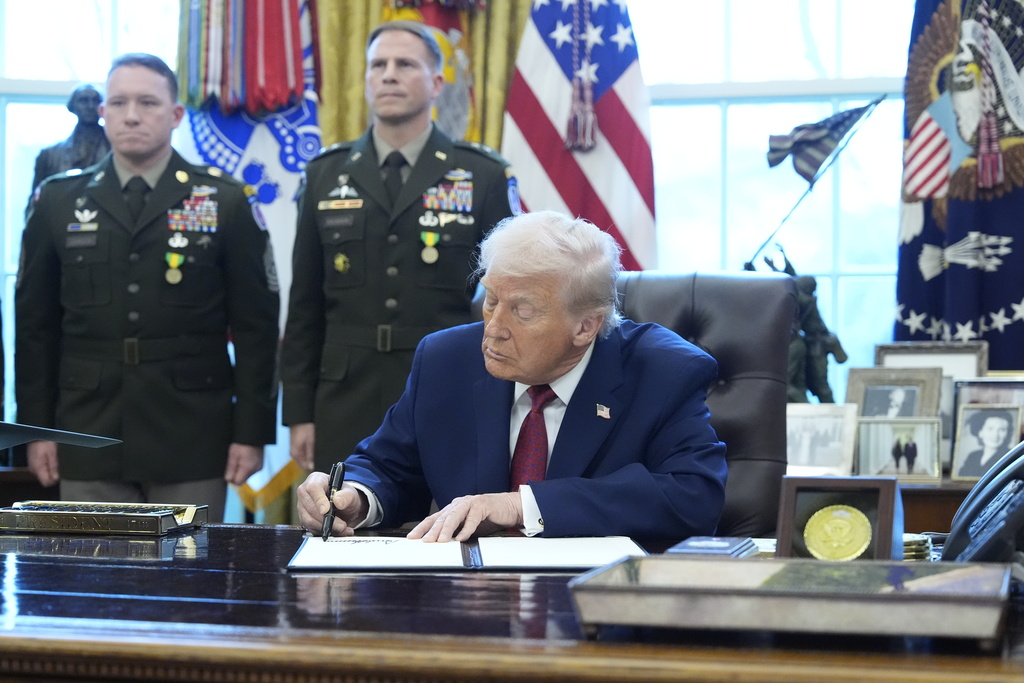It's an arms race based on research stemming back to the 1950s. Today, officials say hypersonic weapons are changing the future of warfare. Like ballistic missiles, hypersonic glide vehicles travel at more than five times the speed of sound, but unlike traditional missiles, they can be maneuvered to avoid getting shot down and potentially change targets mid-flight.
In July, the U.S. was caught off guard by the pace of an adversary's advancements when China successfully launched a rocket carrying a hypersonic glide vehicle, which soared through space. Now Beijing is investing more than Washington in a key area — Artificial Intelligence known as A.I.
Nicolas Chaillan was the country's first Chief Software Officer for the Air Force and Space Force. He just left the job last month. And he tells Newsy AI will be used offensively to help gliders avoid missile defense systems and reach their targets. Defensively, they'll track and stop them.
"AI is effectively the difference between winning or losing when it comes to the adoption of hypersonic glide vehicles," Chaillan said.
NEWSY'S SASHA INGBER: Where we are right now, do we have the capability or good enough A.I. to stop a hypersonic missile from China?
NICOLAS CHAILLAN: No, we don't. We are leaving the nation potentially at risk to be attacked any time with no ability to really defend ourselves.
In a recent peer-reviewed journal, missile scientists from the People's Liberation Army said their AI could write unique software for each weapon's flight right after launch, keeping it on accurate course within about 30 feet, as it weaves through low orbit.
Chaillan says the U.S. is behind, and if the Defense Department doesn't step up by December 2022, it will be too late: AI depends on data, and China has amassed so much data that it will compound exponentially, and the U.S. will never be able to catch up.
There's also the persistent threat of intellectual property theft.
INGBER: Have we seen China try to steal our AI when it comes to hypersonic glide vehicles?
CHAILLAN: I can't talk about that. That's classified.
Maneuvering these weapons slows them down in their paths. So an even more critical area in the modern arms race relies on an ancient material found in the earth: ceramics.
Ceramics are a class of materials that can withstand that environment and are the only candidate to withstand extreme heat loads under hypersonic flight.
Dr. Erica Corral is a distinguished scholar on high temperature materials for hypersonics at the University of Arizona. She's developing ceramics that have melting points above 3,000 degrees Celsius, testing what won't burn up or deform at high speeds and in low altitude. But China appears to be ahead.
"There are institutes in China for materials alone that train over 7,000 people a year," Corral said. "Materials science engineering departments in this country are like 60. So our numbers don't compare to China."
She says there is no domestic source for the ceramics in her lab, and it's not cheap or abundant. She's also experienced testing limitations with facilities that have to reach extremely high temperatures for sustained periods of time.
"Coming up with strategies to evaluate the material under extreme environments is a huge challenge because we're trying to reconstruct the behavior that the materials would exhibit on land," Corral said.
A government report earlier this year found testing facilities "are increasingly busy," booked a year or more in advance. The report said wind tunnel infrastructure is also aging, with 14 facilities constructed before 1970.
An evaluation of infrastructure is ongoing, the Defense Department Office of Inspector General tells Newsy. The Pentagon has allocated about $1 billion to modernize facilities through 2024.
But less testing means less data. And the country’s second most senior general says the U.S. has conducted nine hypersonic tests, compared to China’s hundreds. Officials in Beijing denied the July launch. And the latest U.S. test failed in Alaska after a missile booster setback.











